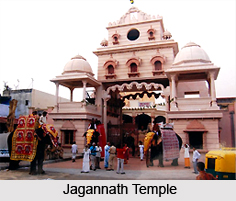 A very ancient temple, located in the Jamalpur area of Ahmedabad, Jagananth Temple has the chief deity worshipped as Lord Jagannath. Others coming in line are Balaram and Subhadra. The focal point of this temple is the ratha yatra. Every year in the months of June/July a substantial procession is taken out, in the lines of the Puri Jagannath Temple. Chariots carrying the idols of Lord Jagannath, Balaram and Subhadra are the principal attractions of the procession, beginning in the morning. The chariots are garlanded, beautified with elephants, gymnasts, acrobats, saints and devotees, all joining in as part of the huge festivity.
A very ancient temple, located in the Jamalpur area of Ahmedabad, Jagananth Temple has the chief deity worshipped as Lord Jagannath. Others coming in line are Balaram and Subhadra. The focal point of this temple is the ratha yatra. Every year in the months of June/July a substantial procession is taken out, in the lines of the Puri Jagannath Temple. Chariots carrying the idols of Lord Jagannath, Balaram and Subhadra are the principal attractions of the procession, beginning in the morning. The chariots are garlanded, beautified with elephants, gymnasts, acrobats, saints and devotees, all joining in as part of the huge festivity.
This article is a stub. You can enrich by adding more information to it. Send your Write Up to content@indianetzone.com





















